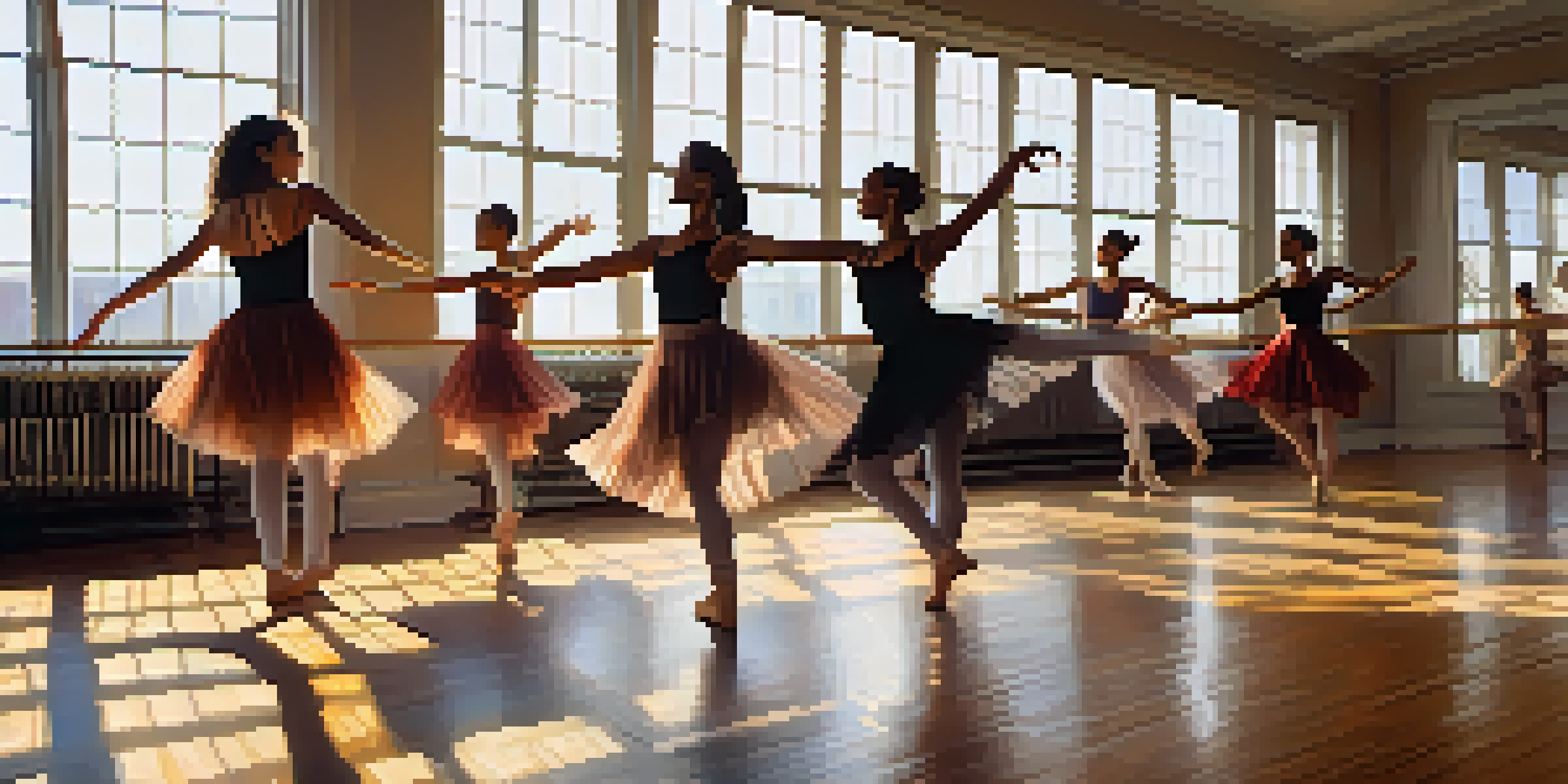The Impact of Dance on Body Image and Self-Identity

Understanding Body Image and Self-Identity
Body image refers to how we perceive our physical selves, while self-identity encompasses how we see ourselves in relation to others and society. These concepts are deeply intertwined, influencing our confidence and self-worth. For many, body image can fluctuate based on societal standards, personal experiences, and, significantly, activities like dance.
The Role of Dance in Shaping Body Image
Dance is a unique art form that encourages personal expression through movement. It can help individuals appreciate their bodies for what they can do, rather than how they look. When dancers focus on their abilities and the joy of movement, they often experience a more positive body image.
Dance Enhances Body Appreciation
Focusing on the joy of movement in dance promotes a positive body image by encouraging individuals to value what their bodies can do rather than how they look.
Dance as a Community Builder
Participating in dance classes or groups fosters a sense of belonging and community. This supportive environment can counteract negative feelings about one’s body, as dancers celebrate each other's strengths and individuality. When surrounded by acceptance, individuals may feel more empowered to embrace their bodies.
Cultural Influences on Dance and Body Image
Different cultures have varying standards of beauty, which influence how dance is perceived and practiced. Some dance forms celebrate diverse body types, promoting inclusivity and acceptance. By embracing multiple representations of beauty, dance can challenge narrow societal expectations and reshape self-identity.
Community Support Boosts Self-Identity
Participating in dance fosters a sense of belonging, allowing individuals to embrace their bodies and celebrate their uniqueness in a supportive environment.
Dance as a Form of Self-Expression
Through movement, dancers can express emotions and experiences that might be hard to articulate. This expression can lead to a deeper understanding of oneself, enhancing self-identity. Additionally, the freedom that comes with dance allows individuals to explore their bodies in a positive light.
Overcoming Negative Body Image Through Dance
Many dancers initially struggle with body image issues, but the journey through dance often leads to self-acceptance. As they engage in the art form, they can learn to appreciate their bodies for their strength and resilience. This transformation can be empowering, paving the way for improved self-esteem.
Dance Therapy for Emotional Healing
Dance therapy provides a safe space for individuals to explore body image and identity issues, leading to emotional release and improved self-acceptance.
The Therapeutic Benefits of Dance
Dance therapy is an emerging field that harnesses movement to promote emotional and psychological healing. It can provide a safe space for individuals to explore their feelings about body image and identity. By engaging in dance, participants can release pent-up emotions and cultivate a healthier self-view.
Conclusion: Embracing Dance for Better Self-Image
Ultimately, dance has the power to transform how we view ourselves and our bodies. By participating in this expressive art form, individuals can cultivate a positive body image and a stronger sense of self-identity. Whether as a hobby or a profession, embracing dance can lead to lasting benefits for mental and emotional well-being.